Effect and Mechanism of Solidified Microstructure on Deformation Behavior, Mechanical Properties, and Residual Stress of Cu-Ni-Si Alloy
Abstract
1. Introduction
2. Experimental Materials and Methods
2.1. Preparation and Cold Rolling of Strip
2.2. Microstructure Analysis
2.3. Mechanical Properties and Residual Stress Test
3. Results and Discussion
3.1. Solidification Structure of C70250 Copper Alloy Strip and Surface Quality of Cold Rolled Strip
3.2. Mechanical Properties and Residual Stress of Cold Rolled C70250 Copper Alloy Strip
3.3. Microstructure of Cold Rolled C70250 Copper Alloy Strip
3.4. Improving Mechanism of Cold Working Performance of C70250 Copper Alloy
4. Conclusions
Author Contributions
Funding
Data Availability Statement
Conflicts of Interest
References
- Khereddine, A.Y.; Larbi, F.H.; Azzeddine, H.; Baudin, T.; Brisset, F.; Helbert, A.L.; Langdon, T.G. Microstructures and textures of a Cu–Ni–Si alloy processed by high-pressure torsion. J. Alloys Compd. 2013, 574, 361–367. [Google Scholar] [CrossRef]
- Wang, C.S.; Fu, H.D.; Zhang, H.T.; He, X.Q.; Xie, J.X. Simultaneous enhancement of mechanical and electrical properties of Cu–Ni–Si alloys via thermo-mechanical process. Mater. Sci. Eng. A 2022, 838, 142815. [Google Scholar] [CrossRef]
- Lei, Q.; Li, Z.; Dai, C.; Wang, J.; Chen, X.; Xie, J.M.; Chen, D.L. Effect of aluminum on microstructure and property of Cu–Ni–Si alloys. Mater. Sci. Eng. A 2013, 572, 65–74. [Google Scholar] [CrossRef]
- Gholami, M.; Altenberger, I.; Vesely, J.; Kuhn, H.-A.; Wollmann, M.; Janecek, M.; Wagner, L. Effects of severe plastic deformation on transformation kinetics of precipitates in CuNi3Si1Mg. Mater. Sci. Eng. A 2016, 676, 156–164. [Google Scholar] [CrossRef]
- Ryu, H.J.; Baik, H.K.; Hong, S.H. Effect of thermomechanical treatments on microstructure and properties of Cu-base leadframe alloy. J. Mater. Sci. 2000, 35, 3641–3646. [Google Scholar] [CrossRef]
- Wu, Y.; Li, Y.; Lu, J.; Tan, S.; Jiang, F.; Sun, J. Effects of pre-deformation on precipitation behaviors and properties in Cu-Ni-Si-Cr alloy. Mater. Sci. Eng. A 2019, 742, 501–507. [Google Scholar] [CrossRef]
- Altenberger, I.; Kuhn, H.A.; Gholami, M.; Mhaede, M.; Wagner, L. Ultrafine-Grained Precipitation Hardened Copper Alloys by Swaging or Accumulative Roll Bonding. Metals 2015, 5, 763–776. [Google Scholar] [CrossRef]
- Wei, H.; Chen, Y.-L.; Su, L.; Tang, D.; Xu, Z.-J. Study on Texture Evolution and Deformation Mechanism of the Cu-Ni-Si Alloy during Cold-rolling Treatment. Procedia Eng. 2017, 207, 1111–1116. [Google Scholar] [CrossRef]
- Głuchowski, W.; Rdzawski, Z.; Sobota, J.; Domagała-Dubiel, J. Effect of the combined heat treatment and severe plastc deformation on the microstructure of CuNiSi alloy. Arch. Metall. Mater. 2016, 61, 1207–1214. [Google Scholar] [CrossRef]
- Hua, Y.; Nie, Z.; Wang, L.; Zhang, H.; Wang, C.; Tan, C.; Wang, Y. Studies of intergranular and intragranular stresses in cold-rolled CuNiSi alloys. J. Alloys Compd. 2020, 818, 152896. [Google Scholar] [CrossRef]
- Araki, A.; Poole, W.J.; Kobayashi, E.; Sato, T. Twinning Induced Plasticity and Work Hardening Behavior of Aged Cu-Ni-Si Alloy. Mater. Trans. 2014, 55, 501–505. [Google Scholar] [CrossRef]
- Lee, S.; Matsunaga, H.; Sauvage, X.; Horita, Z. Strengthening of Cu–Ni–Si alloy using high-pressure torsion and aging. Mater. Charact. 2014, 90, 62–70. [Google Scholar] [CrossRef]
- Khereddine, A.Y.; Larbi, F.H.; Kawasaki, M.; Baudin, T.; Bradai, D.; Langdon, T.G. An examination of microstructural evolution in a Cu–Ni–Si alloy processed by HPT and ECAP. Mater. Sci. Eng. A 2013, 576, 149–155. [Google Scholar] [CrossRef]
- Hosseini, S.A.; Manesh, H.D. High-strength, high-conductivity ultra-fine grains commercial pure copper produced by ARB process. Mater. Des. 2009, 30, 2911–2918. [Google Scholar] [CrossRef]
- Liu, J.L.; Huang, H.Y.; Xie, J.X. Superelastic anisotropy characteristics of columnar-grained Cu–Al–Mn shape memory alloys and its potential applications. Mater. Des. 2015, 85, 211–220. [Google Scholar] [CrossRef]
- Andrews, P.V.; West, M.B.; Robeson, C.R. The effect of grain boundaries on the electrical resistivity of polycrystalline copper and aluminium. Philos. Mag. 1969, 19, 887–898. [Google Scholar] [CrossRef]
- Meng, B.; Kong, M.; Yang, Q.Q.; Zhang, H.; Zhu, Y.; Lin, Z. Effects of grain-boundary diffusions and modifications on the electrical conductivities of YSZ coatings with columnar microstructure. Solid State Ion. 2014, 268, 48–53. [Google Scholar] [CrossRef]
- Liao, W.N.; Liu, X.F.; Yang, Z.; Yi, F. Effect and mechanism of process parameters on microstructure and properties of Cu-Ni-Si alloy prepared by temperature controlled mold continuous casting. Ferroelectrics 2018, 528, 150–161. [Google Scholar] [CrossRef]
- Lan, C.B.; Wu, Y.; Guo, L.; Chen, F. Effects of cold rolling on microstructure, texture evolution and mechanical properties of Ti-32.5Nb-6.8Zr-2.7Sn-0.3O alloy for biomedical applications. Mater. Sci. Eng. A 2017, 690, 170–176. [Google Scholar] [CrossRef]
- Bushroa, A.R.; Rahbari, R.G.; Masjuki, H.H.; Muhamad, M.R. Approximation of crystallite size and microstrain via XRD line broadening analysis in TiSiN thin films. Vacuum 2012, 86, 1107–1112. [Google Scholar] [CrossRef]
- Mote, V.D.; Purushotham, Y.; Dole, B.N. Williamson-Hall analysis in estimation of lattice strain in nanometer-sized ZnO particles. J. Theor. Appl. Phys. 2012, 6, 6. [Google Scholar] [CrossRef]
- Fujii, T.; Nakazawa, H.; Kato, M.; Dahmen, U. Crystallography and morphology of nanosized Cr particles in a Cu-0.2% Cr Alloy. Acta Mater. 2000, 48, 1033–1045. [Google Scholar] [CrossRef]
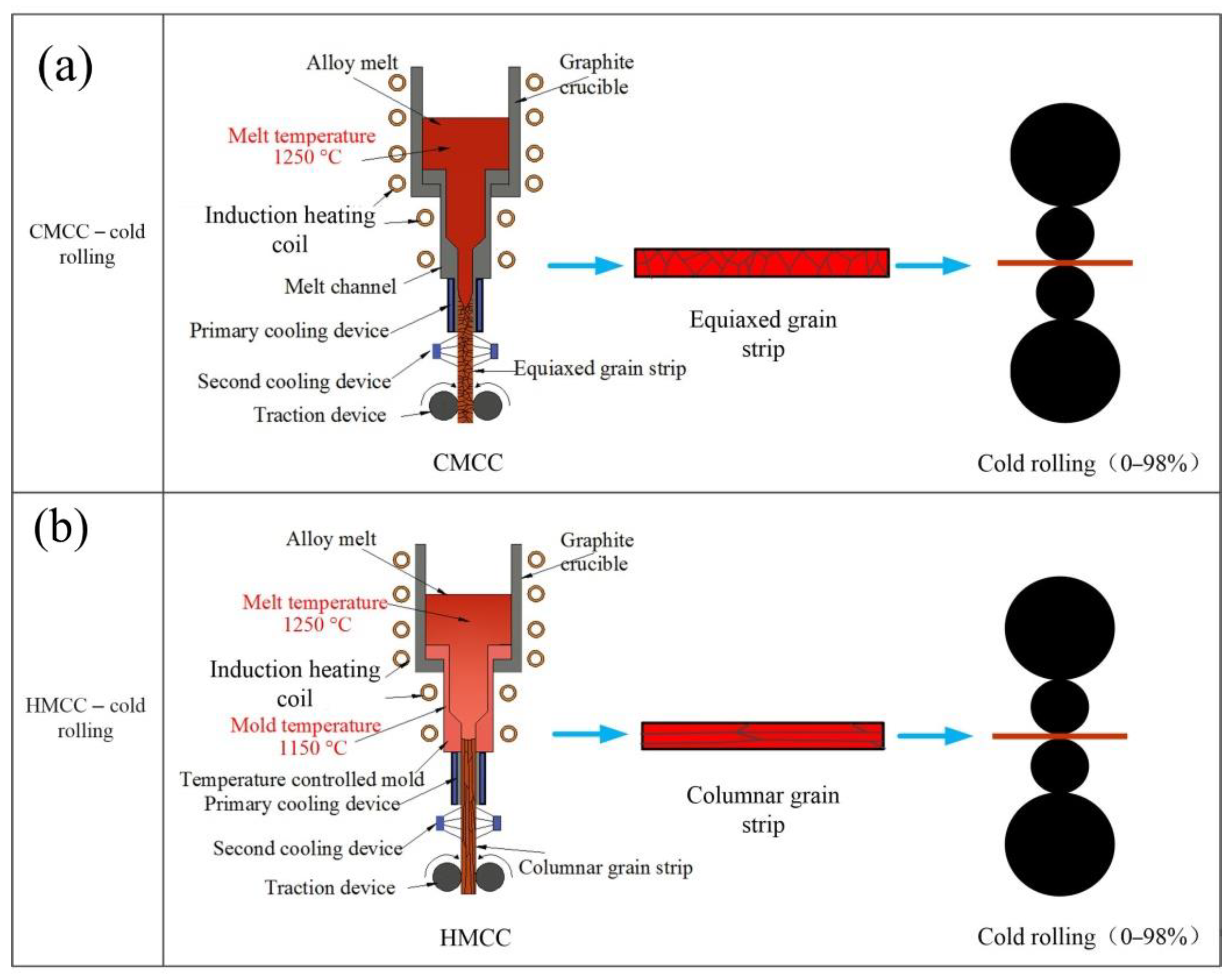
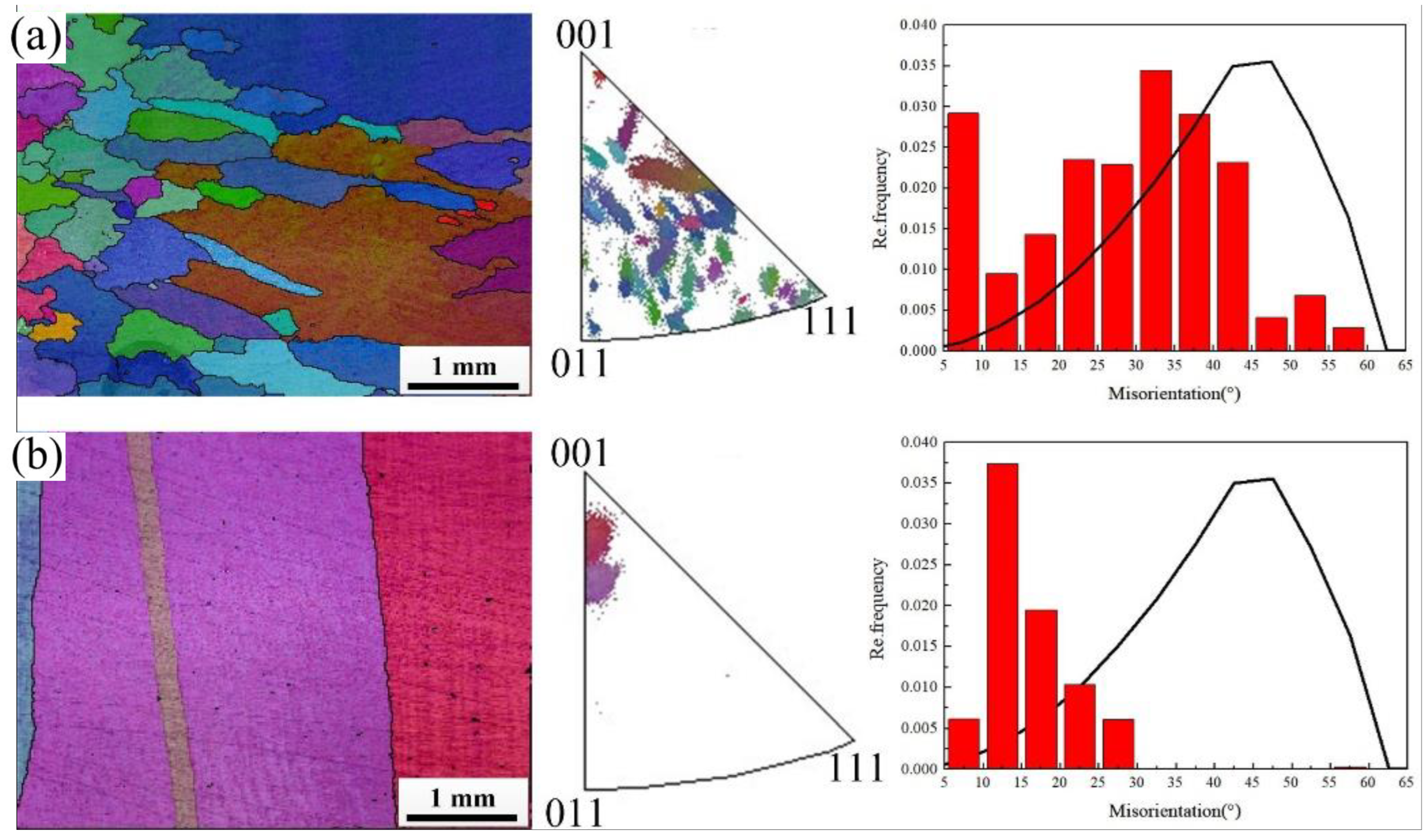

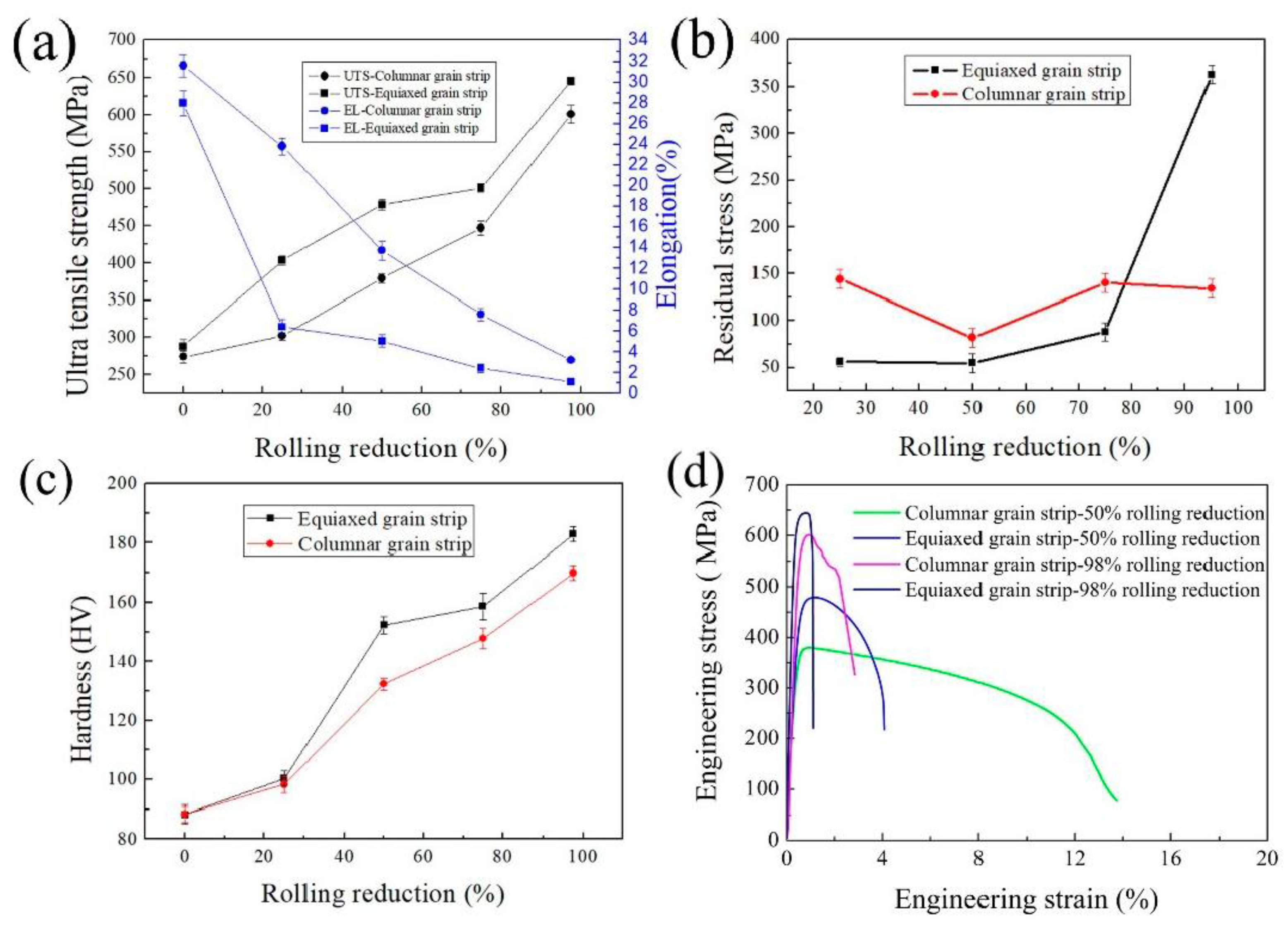
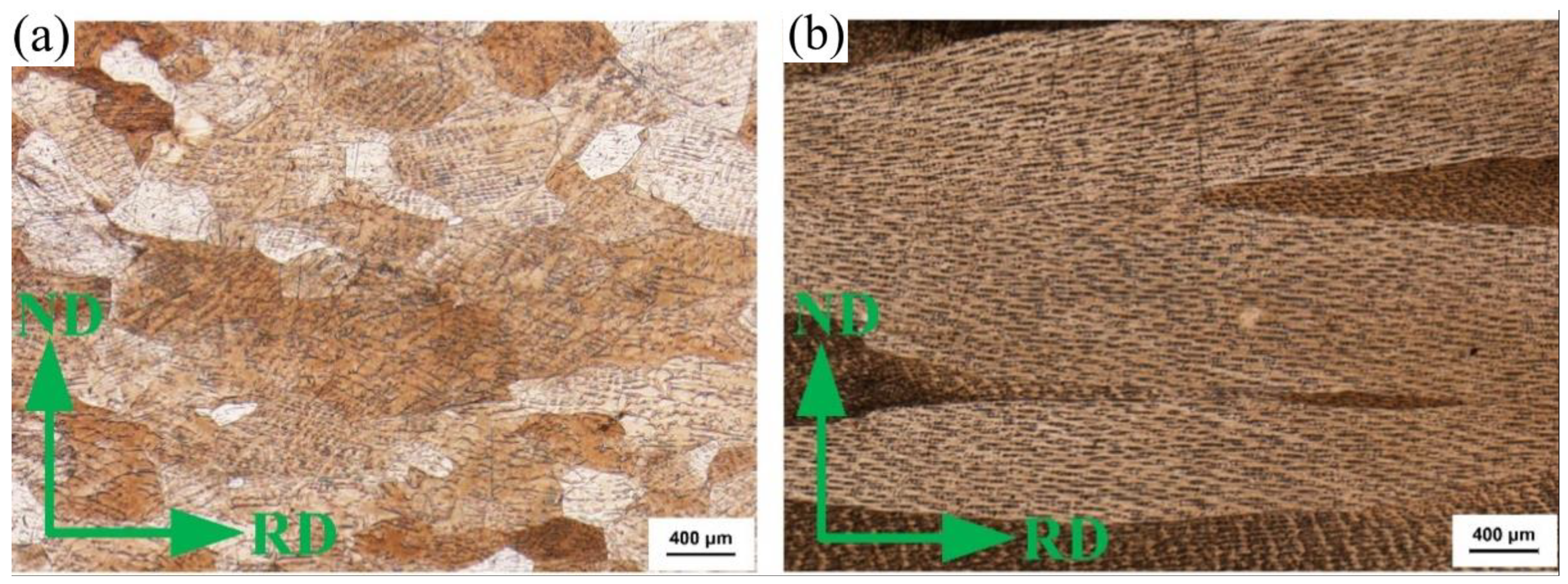


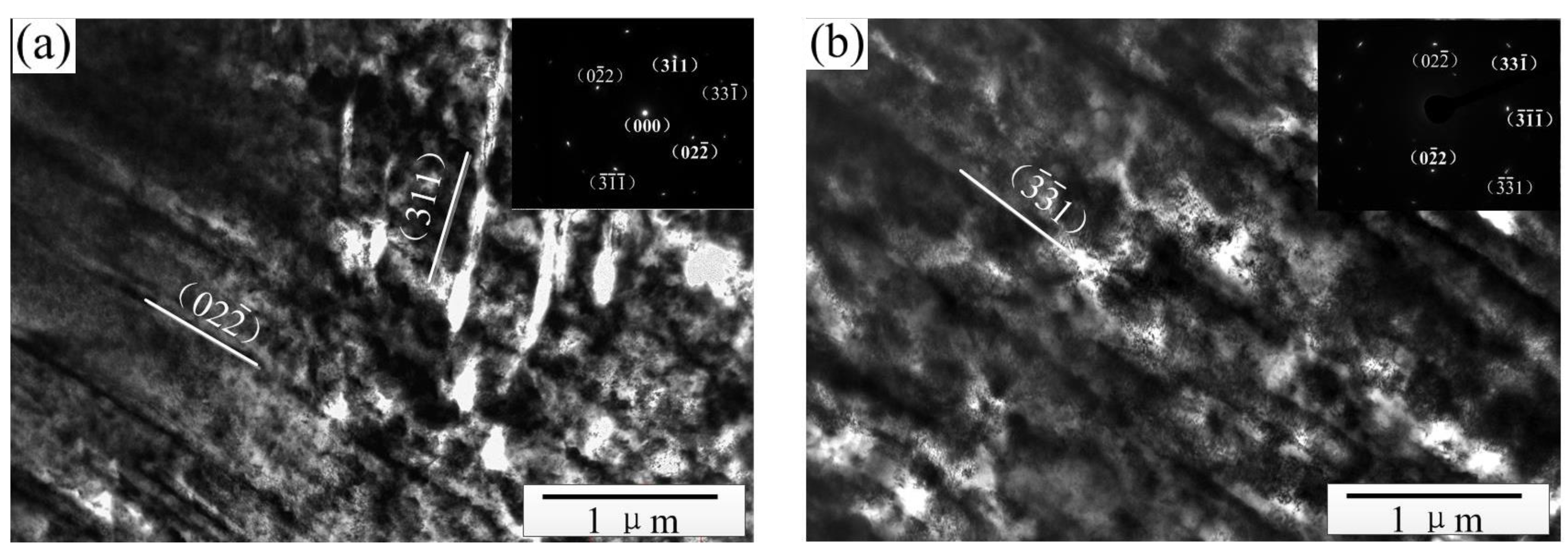
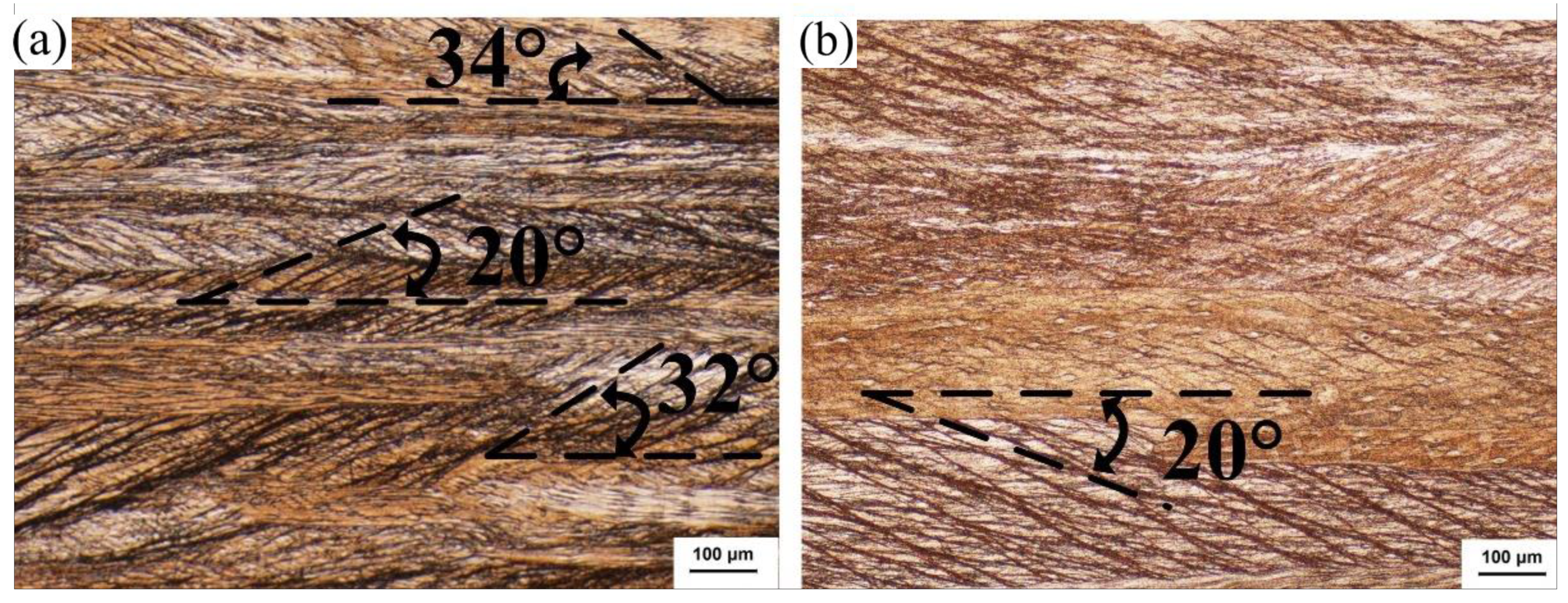

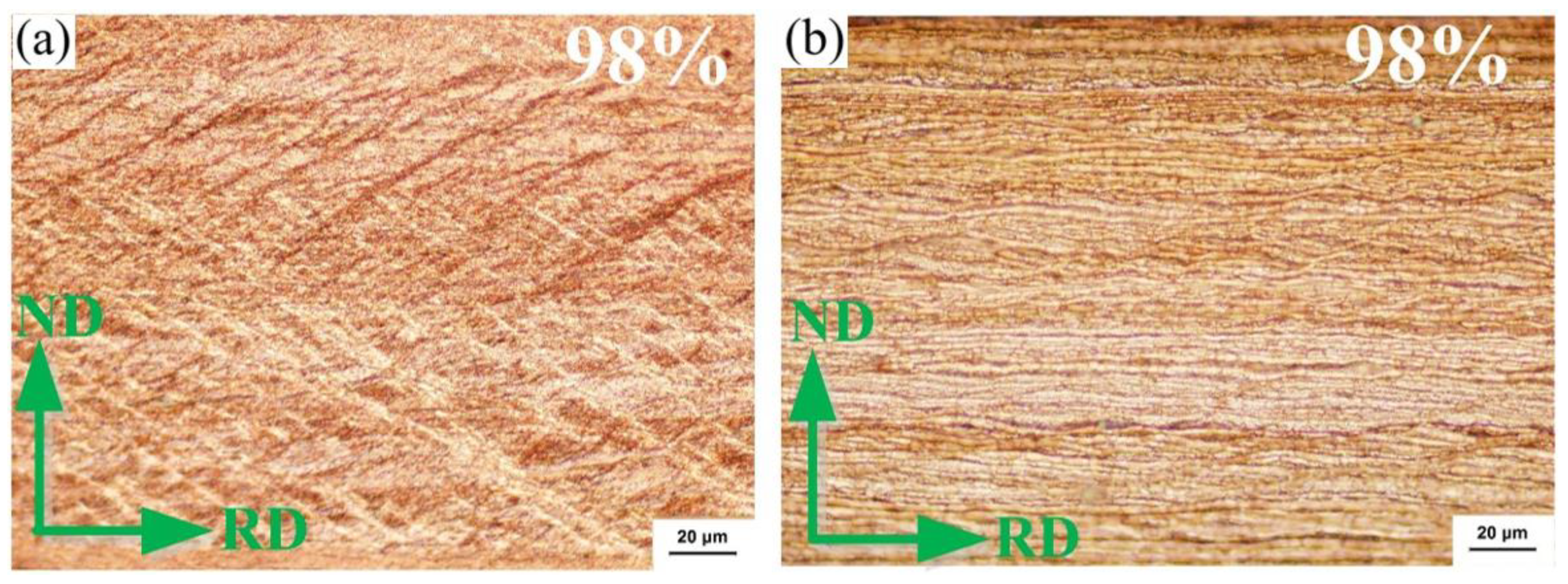

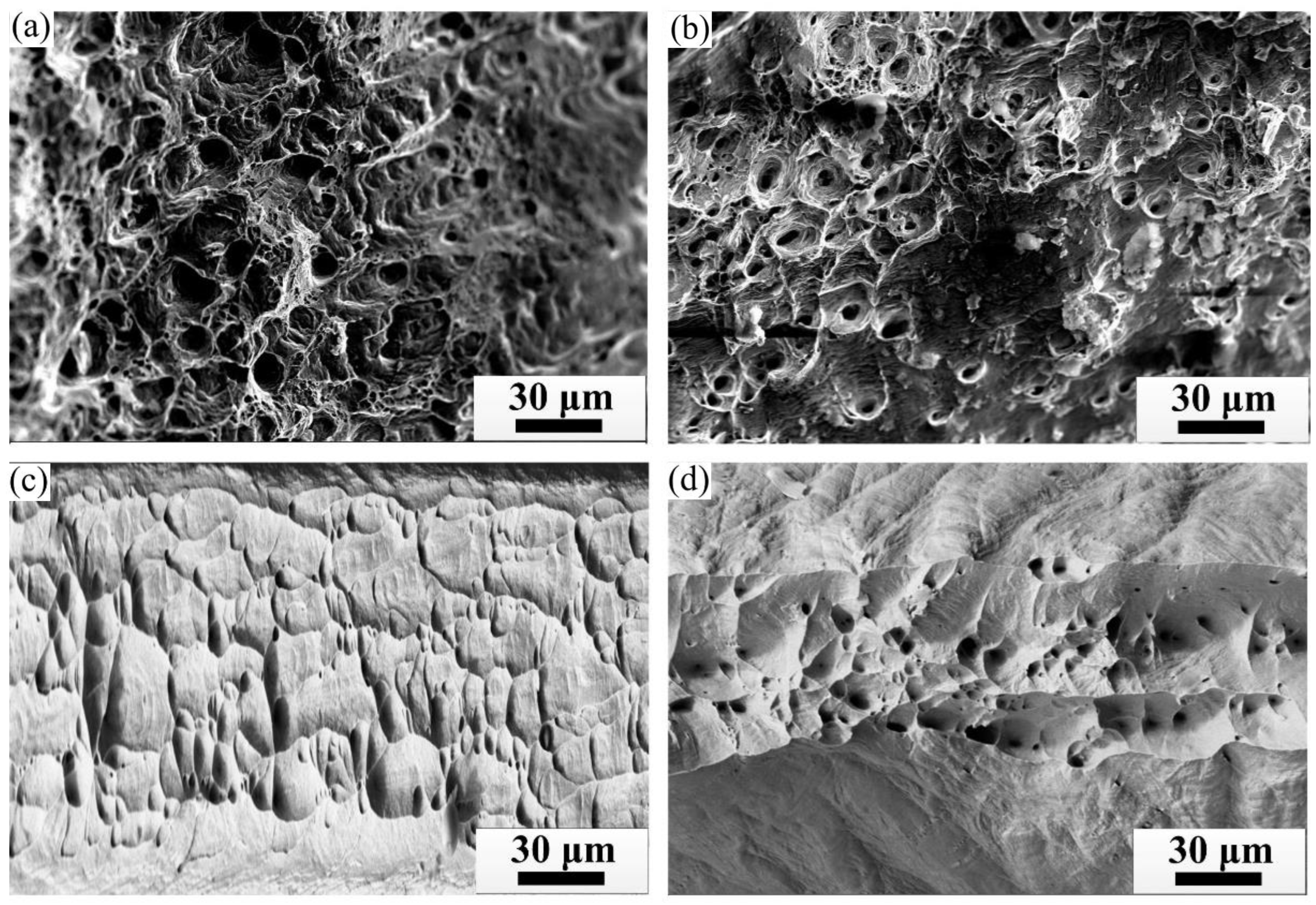
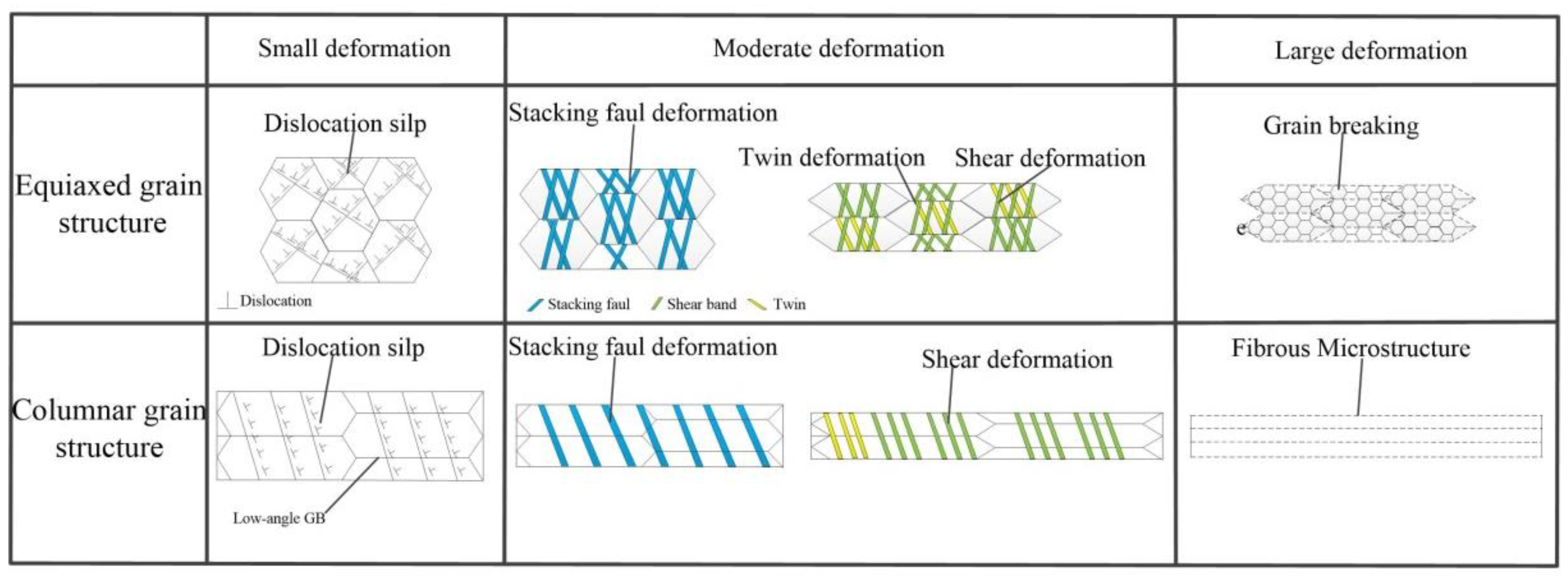
| Cold Deformation | a (nm) | ρ (×10 15 m−2) | S (%) | |
|---|---|---|---|---|
| Equaxied grain strip | 0.25 | 0.36542 | 2.08 | 0.21 |
| 0.5 | 0.37609 | 2.75 | 0.31 | |
| 0.75 | 0.38355 | 3.41 | 0.36 | |
| 0.98 | 0.38962 | 5.98 | 0.58 | |
| Columnar grain strip | 0.25 | 0.36312 | 1.94 | 0.12 |
| 0.5 | 0.37423 | 2.35 | 0.24 | |
| 0.75 | 0.37568 | 2.60 | 0.33 | |
| 0.98 | 0.38412 | 4.56 | 0.52 |
Publisher’s Note: MDPI stays neutral with regard to jurisdictional claims in published maps and institutional affiliations. |
© 2022 by the authors. Licensee MDPI, Basel, Switzerland. This article is an open access article distributed under the terms and conditions of the Creative Commons Attribution (CC BY) license (https://creativecommons.org/licenses/by/4.0/).
Share and Cite
Liao, W.; Zhang, C.; Qiang, H.; Song, W.; Ren, H. Effect and Mechanism of Solidified Microstructure on Deformation Behavior, Mechanical Properties, and Residual Stress of Cu-Ni-Si Alloy. Materials 2022, 15, 8724. https://doi.org/10.3390/ma15248724
Liao W, Zhang C, Qiang H, Song W, Ren H. Effect and Mechanism of Solidified Microstructure on Deformation Behavior, Mechanical Properties, and Residual Stress of Cu-Ni-Si Alloy. Materials. 2022; 15(24):8724. https://doi.org/10.3390/ma15248724
Chicago/Turabian StyleLiao, Wanneng, Chenxing Zhang, Hui Qiang, Weifei Song, and Hongwen Ren. 2022. "Effect and Mechanism of Solidified Microstructure on Deformation Behavior, Mechanical Properties, and Residual Stress of Cu-Ni-Si Alloy" Materials 15, no. 24: 8724. https://doi.org/10.3390/ma15248724
APA StyleLiao, W., Zhang, C., Qiang, H., Song, W., & Ren, H. (2022). Effect and Mechanism of Solidified Microstructure on Deformation Behavior, Mechanical Properties, and Residual Stress of Cu-Ni-Si Alloy. Materials, 15(24), 8724. https://doi.org/10.3390/ma15248724





